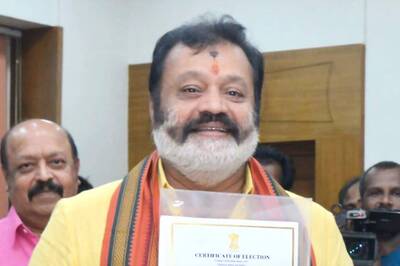
views
Delhiites usually look out for the 1st day of July with a lot of hope. It is, after all, the day when the monsoon is supposed to make a landfall in the capital which has by then, been battling the relentless summers for more than two months. This year it was slightly different. The monsoons were late (as they are usually) and right at the heart of Delhi, the hopes of a few hundred people at the Indian Air Force Headquarters were pinned on an event unfolding about 2000 kms south of the capital, at Bengaluru.
After spending more than 30 years on the drawing boards, CAD softwares and various test centres, the Light Combat Aircraft was ready to be inducted into the Indian Air Force. But is the moment as momentous as it is made out to be? Let us step back and try to rescue a semblance of reality from behind the smokescreen of adulation.
Two decades too late
The breakdown of the Soviet Union, the fall of the Berlin Wall, the liberalisation of the Indian economy, the Kargil War, 9/11, Australia’s three consecutive World Cup victories, 26/11, India’s World Cup victory, Narendra Modi’s victory in the 2014 elections - these events are all tied by a common thread - they all happened while the Tejas was in various stages of design and development. A fighter aircraft that was supposed to replace the obsolete MiG 21 back in 1995 is still nowhere near achieving its objective. Still excited?

The Indian Air Force’s war doctrine requires it to maintain an optimum strength of 42 squadrons of combat aircraft. Obsolescence of the Soviet era fighters and the painful gestation of the LCA has translated into the IAF’s current strength of only 34 squadrons. So the induction of the Tejas is exactly what the doctor recommended, right? Wrong. Only two aircraft were inducted on July 1 (a full squadron has 20 aircraft).
The IAF plans to induct six aircraft this financial year and about eight in the next. Still not a complete squadron. The IAF wants to induct 16 aircraft every year but the Hindustan Aeronautics Limited is unable to deliver more than eight with their current infrastructure.
No, not the first indigenous aircraft
Contrary to popular belief, the LCA ‘Tejas’ is not the first combat aircraft indigenously developed in India. That honour goes to the HF-24 Marut, a fighter bomber that flew for the first time in 1961. It was designed by the HAL and the German aeronautical engineer Kurt Tank. The Marut saw combat in the 1971 Indo-Pak war and played a key role in the fabled Battle of Longewala.
What Next?
Next in line is the Tejas Mark 2 which will feature a significantly more powerful engine and improved aerodynamics. The Mark 2 will incorporate many features that will make it a fifth generation fighter. The weapon load will also be upped by another 1000 kgs. Even as scientists are working to achieve the Mark 2 levels, an LCA Mark 3 is already in the pipeline. This future aircraft will use composite materials in over 70% of its construction thus making it extremely stealthy.
All's not lost
The Tejas programme has not been without its share of agonies, but it does have several silver linings. Since it first flew in 2001, the National Flight Test Centre (NFTC) has conducted over 3,000 accident free sorties. Also, full marks must be awarded to Aeronautics Development Agency (ADA) for the compound delta design and the fly-by-wire controls which make the Tejas a super-manoeuvrable platform. The current aircraft is, by all means a most potent platform for future development and modernisation. All this should stand the ADA and the HAL in good stead for future projects like the Tejas Mark 2, Tejas Navy and the Advanced Medium Combat Aircraft (AMCA).




















Comments
0 comment